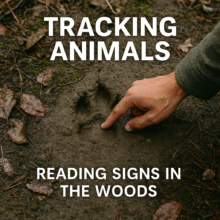How to Find Coyote Dens: A Comprehensive Guide to Nature’s Secret Chambers

Table of Contents
- Table of contents
- Introduction
- A Glimpse into the Coyote’s World
- Unpacking the Coyote Burrow
- Decoding Nature: Tracking a Burrow
- Urban Coyotes: The City’s Secret Tenants
- Observing with Respect and Responsibility
- Coyotes in Cultural Narratives
- Harmonizing Human-Coyote Relations
- Conclusion: Nature’s Lessons
- FAQs
Table of contents
Introduction
Discovering Coyote Dens: The mysterious howl of the coyote is a distinctive sound echoing across North America’s wild terrains. While these adept creatures establish their dens beneath the earth, hidden from plain sight, the question arises: how do we find these coyote dens?
A Glimpse into the Coyote’s World
- The Historical HabitatOnce limited to open plains and arid deserts, coyotes have ventured far and wide, marking territories even in dense forests and bustling cities.
- In terms of pack dynamics, coyotes occasionally appear alone. However, they frequently operate within family groups, utilizing teamwork as a crucial strategy for survival.
- Conversations in HowlsBeyond the haunting night cries, their varied sounds range from warning signals to bonding communications with their kin.
Unpacking the Coyote Burrow
- The Perfect LocationFactors like proximity to food, availability of water, and reduced human disturbance dictate where a coyote chooses to establish its burrow.
- Architecture UndergroundMore than a simple hole, these burrows exhibit complexity with potential multiple exits and chambers for various purposes.
- The Evolution of DensWhile some burrows serve as lifelong homes, others are temporary shelters during hunts or transit.
Decoding Nature: Tracking a Burrow
- Behavioral PatternsObserving their movement, especially during their pup nurturing months, can give clues to their burrow’s whereabouts.
- Narratives in the GroundTell-tale signs such as accumulated prey remains, freshly dug earth, or even a specific scent can hint at a nearby burrow.
- The Sound and Smell of NatureThe muffled cries of young or the distinct musky aroma can sometimes guide you right to a burrow’s entrance.
Urban Coyotes: The City’s Secret Tenants
- Navigating the Urban MazeGreen pockets, abandoned structures, and even beneath busy roads, urban coyotes have become adept at finding hideouts in the city.
- Traits of a City BurrowThese city dens prioritize concealment, often being more compact and strategically placed than their rural counterparts.
Observing with Respect and Responsibility
- Boundaries in NatureCuriosity should never come at the animal’s expense. Maintaining a respectful distance ensures their well-being.
- Observation GearEquip yourself with tools like high-zoom cameras and sound amplifiers, ensuring you can observe without intrusion.
Coyotes in Cultural Narratives
- Tales from Native TribesExplore stories where coyotes, often portrayed as cunning tricksters or wise figures, play pivotal roles.
- The Coyote in Contemporary MediaFrom animated shows to bestselling books, the coyote has always captured imaginations.
Harmonizing Human-Coyote Relations
- Debunking Common MisconceptionsUnderstand their diet, habits, and threat perception to dispel baseless fears.
- Strategies for Peaceful CoexistenceEmploy tactics like proper trash disposal and pet protection to ensure a mutualistic relationship.
Conclusion: Nature’s Lessons
Our quest to find coyote dens teaches us a broader lesson about nature: it’s filled with wonders, surprises, and intricate designs. Every creature, including the coyote, has its unique place in the ecosystem.
FAQs
- How extensive can a coyote’s burrow be?
- Depending on their needs, burrows can range from 5 feet to an expansive 20 feet or more in depth.
- Are certain seasons more suitable for spotting burrows?
- Spring, with the birth of new pups, sees heightened activity, but coyotes use their burrows throughout the year.
- Do coyotes exhibit territorial behavior over burrows?
- Absolutely. Coyotes can be fiercely protective of their homes, especially when they have young to care for.
- How can communities prevent coyote conflicts?
- Educative sessions, community guidelines, and promoting understanding are critical to reducing potential conflicts.
- Is it safe to approach a seemingly deserted burrow?
- It’s advisable to stay clear. Even if it seems unoccupied, disturbing a burrow can have unforeseen consequences.







